#isabelle lyons
Explore tagged Tumblr posts
Text

















pendulum, george schaefer 1969
#pendulum#george schaefer#1969#jean seberg#george peppard#richard kiley#charles mcgraw#madeleine sherwood#robert f. lyons#frank marth#marj dusay#paul mcgrath#stewart moss#isabel sanford#the pit and the pendulum#à bout de souffle#bonjour tristesse#airport#das schwarze schaf#lewinsky
4 notes
·
View notes
Text
Les leaders visionnaires derrière la Biennale de Lyon : Isabelle Bertolotti et Alexia Fabre
La 17e Biennale de Lyon, qui s’est clôturée le 5 janvier 2025 après 100 jours d’exposition, n’a pas seulement brillé par ses 285 000 visiteurs, mais surtout par la vision audacieuse de ses deux commissaires d’exposition, Isabelle Bertolotti et Alexia Fabr
La 17e Biennale de Lyon, qui s’est clôturée le 5 janvier 2025 après 100 jours d’exposition, n’a pas seulement brillé par ses 285 000 visiteurs, mais surtout par la vision audacieuse de ses deux commissaires d’exposition, Isabelle Bertolotti et Alexia Fabre. Ces deux figures emblématiques de l’art contemporain ont su transformer cet événement en un espace de dialogue entre l’art, les territoires…
0 notes
Note
could you maybe write some pregnant smut with either alexia or leah please and thank youuu 🤭
this isn’t at all what you asked for because my mind went blank… but i wanted to give you something. a follow up may be on the horizon
rich!reader, postpartum sex ban, let’s gooo
-
You are experiencing what can only be described as an emergency.
Not a life-threatening emergency, no. Not in the conventional sense. There is no fire. No armed robbery. No medical professionals are needed.
And yet—despite the complete absence of immediate danger—you are suffering. You are in crisis.
Because it has been six weeks since you have been able to have sex.
Six weeks.
Forty-two days.
One thousand and eight hours.
You do the maths frequently. It brings you no comfort.
Because your wife—your unreasonably attractive, infuriatingly smug wife—has been making it worse.
You don’t think she’s doing it on purpose. But then again, you also didn’t think you were the kind of person who could be undone by the mere existence of another human being, and yet—
Here you are.
Postpartum. Horny. Not okay.
Your last shred of dignity clings to the edge of a cliff, gripping so desperately you might cry.
And then, because the universe hates you, you are forced to endure the absolute worst possible setting for your suffering: a Champions League match.
Barcelona vs Lyon. Quarter-finals. Home leg. A packed stadium. Your baby in your lap. Your wife on the pitch.
It is the worst possible arrangement of things.
Because Alexia, captain, leader, heartbeat of the team, is also—unfortunately—a menace to your well-being.
She is everywhere. Commanding. Dominating. Bossing the midfield. Calling for the ball. Intercepting play. Creating chances.
And she is sweaty.
She is so sweaty.
Her shirt clings to her back. Her thighs glisten under the floodlights. She is locked in, sharp, a threat. She pulls her shorts up—a little habit she has before every free kick—and your stomach drops to your knees.
You are not okay.
You have not been okay for weeks.
You shift slightly in your seat, trying to focus on anything else. You fail spectacularly.
Isabel, blessedly oblivious to your suffering, sleeps peacefully against your chest, one tiny hand curled into a fist against your shirt. She has not known suffering a day in her life.
And then—because life is cruel—Alexia scores.
The entire stadium erupts.
She roars, fist in the air, running to the corner flag, chased by teammates.
And you—seated in the most privileged of all possible seats—are struck with the deep, undeniable realisation that you have never been more attracted to anyone in your entire life.
Which is a problem.
Because you are in a box, surrounded by people.
Important people.
The president of the club is to your left. His wife is beside him, clutching his arm, thrilled, eyes wide. Across from you, executives are clapping. Your in-laws—who insisted on coming—are beaming.
And yet—all you can think about is how badly you want to jump your wife in front of all of them.
You clench your jaw. Adjust your grip on the baby. Breathe through your nose. Try to survive.
Twenty minutes later, Barcelona win.
The final whistle goes. The team celebrates. Cheers. Applause. The smell of fresh beer being flung into the air in the stands.
And then—the worst possible thing happens.
Alexia jogs off the pitch.
Your body, betraying you completely, tenses in anticipation.
You know what’s coming.
You have seen this play out a thousand times before.
Ten minutes later, the door swings open.
You brace yourself.
And then she walks in.
And you—like a complete idiot—forget how to breathe.
Because she is fresh from the shower.
She is in a navy tracksuit. The zip is low. Her hair is still wet, damp against her skin.
She smells like soap.
Like her.
And she knows.
She sees the way you tense. She sees the way your grip tightens on the baby. She knows exactly what she is doing to you.
And then—because she hates you—she leans down and kisses Isabel’s forehead.
Soft. Gentle. Devastating.
Your stomach drops through the floor.
She sits down next to you. So casual. So smug. She touches your thigh, her fingers barely brushing against the fabric, like she isn’t completely destroying you.
And then—to make things worse—she focuses entirely on the baby.
You stare at her.
You cannot handle this.
She hums softly under her breath, rubbing small circles into Isabel’s back. Her fingers move so lightly, so effortlessly, and your stomach flips.
Your entire body is on fire.
She adjusts the blanket. Fixes a tiny sock. Makes a soft, affectionate noise.
And you—you actually whimper.
She laughs.
The kind of laugh that makes you want to throw yourself into the sea.
She leans in slightly, voice low, amused, calculated.
“Three more days.”
Your eyes slam shut.
You are in actual, physical pain.
Seventy-two hours.
You might not survive.
God help you.
647 notes
·
View notes
Text

Isabelle Sweetginger
Modèle
Femme intemporelle•51 ans•Lyon 🇨🇵 𝐵𝑒𝑎𝑢𝑡𝑦 ℎ𝑎𝑠 𝑛𝑜 𝑎𝑔𝑒 #modelephoto Mode | Lingerie | Gourmet
74 notes
·
View notes
Text




Baronets -> Coal-miners -> Entrepreneurs ->Royalty
“A time may yet come, perchance, when a descendant of one of these simple artizans may arise, not unworthy of the Conyers' ancient renown; and it will be a gratifying discovery to some future genealogist, when he succeeds in tracing in the quarterings of such a descendant the unsullied bearing of Conyers of Durham." Sir Bernard Burke, 1861.
In 1861 the genealogist and publisher of Burke’s Peerage Sir Bernard Burke, in his book "Vicissitudes of Families", dedicated a chapter to the “The Fall of Conyers" which concludes with the following: "Magni stat nominis umbra! The poor Baronet left three daughters, married in very humble life: Jane, to William Hardy; Elizabeth, to Joseph Hutchinson; and Dorothy, to Joseph Barker, all working men in the little town of Chester-le-Street. A time may yet come, perchance, when a descendant of one of these simple artizans may arise, not unworthy of the Conyers' ancient renown; and it will be a gratifying discovery to some future genealogist, when he succeeds in tracing in the quarterings of such a descendant the unsullied bearing of Conyers of Durham."
Sir Thomas Conyers, was the 9th and last Baronet Conyers of Horden Hall. While a gentleman at birth, he was reduced to poverty and resided at the Durham Workhouse. His pride made him reject financial aid from his distant relatives, among them his second cousin Mary Eleanor Bowes, Countess of Strathmore, whose funeral he attended at Westminster Abbey in 1800. At the time she was one of the wealthiest women in England and is an ancestor of Elizabeth Bowes-Lyons, the late Queen Mother.
His later years were made somewhat more comfortable at the aid of another distant cousin, George Lumley-Saunderson, the 5th Earl of Scarborough who provided him with a small house. Sir Thomas died a pauper on 15 April 1810. His surviving children, three daughters had married working men in the little town of Chester-le-Street, County Durham. As if from a Thomas Hardy novel, his daughter Jane married a man named William Hardy.
For five generations Sir Thomas Conyers descendants would work as labourers, and often in coal mines once owned by distant ancestors and now owned by the Bowes-Lyon family. By the sixth generation his descendant Robert Harrison, a carpenter left his family still working in the coal mines to seek opportunities in London. There he married and had a daughter, Dorothy who married a builder named Ronald Goldsmith.
The early years of Dorothy and Ronald’s marriage and their children's upbringing were spent in a comfortable council house, providing the security needed to buy their own home. Their daughter, Carole, became a flight attendant and married a young flight dispatcher, Michael. They settled in Berkshire and spent a few years in Jordan, working for British Airways, before returning to Berkshire, where Carole started her own business at her kitchen table.
Almost ten generations and 201 years after Sir Thomas Conyers died a pauper, his descendant Catherine Middleton married Prince William of Wales on 29 April 2011.
Family Line
Sir Thomas Conyers 9th Bt. Conyers of Horden (drawing) m. Isabel Lambton
Jane Conyers of Chester Le Street, County Durham m. William Hardy of
Jane Hardy of Biddick, County Durham m. James Liddell
Anthony Liddell of Little Lumley, County Durham m. Martha Stephenson
Jane Liddell (photo) m. John Harrison
John Harrison (photo) m. Jane Hill
Robert Harrison (photo) m. Elizabeth Temple
Dorothy Harrison (photo) m. Ronald Goldsmith
Carole Goldsmith m. Michael Middleton
Catherine Middleton m. Prince William of Wales
#ktd#brf#british royal family#kate middleton#princess of wales#prince william#Carole Middleton#The north#england#northern england#durham#coal#mining#elizabeth bowes lyon#the queen mother#queen mother
110 notes
·
View notes
Text
It was the morning of May 24, 1888, and a large, ethnically diverse crowd waited in the Sala Ducale of the Apostolic Palace in Rome for the pope to arrive. Led by Cardinal Charles Lavigerie, the French missionary archbishop of Algiers, the group had traveled to Rome on a double pilgrimage from North Africa and from the Diocese of Lyon, France. The pilgrims had earlier entered St. Peter’s Square with camels and a special gift for the pope: a pair of gazelles wearing silver collars inscribed with Latin verse.
Shortly after noon, the smiling Pope Leo XIII and his entourage entered the Sala Ducale to sustained applause from the pilgrims. It was a special year for Leo: the golden jubilee of his ordination to the priesthood. Preparations had been underway throughout nearly the entirety of 1887 for the yearlong celebration in which the pope would receive thousands of gifts from all over the world and greet an abundance of well-wishers.
Among the pilgrims who traveled to Rome during Leo’s jubilee, however, this group was unique, and its uniqueness was indicated by the 12 men strategically placed at the front of the crowd. These 12 African men had been enslaved before their freedom was purchased by Lavigerie and his missionaries. They were at the head of the group because today’s audience was an unofficial celebration of the release of Pope Leo’s encyclical on slavery.
On Feb. 10, the Brazilian statesman and abolitionist Joaquim Nabuco had met with Leo in a private audience and asked the pope to write the encyclical. Brazil was on the cusp of abolishing slavery, which would make it the last country in the Western Hemisphere to do so. Due to the Brazilian princess regent Isabel’s devout Catholicism, Nabuco thought a letter from the pope condemning slavery might embolden her to support abolition more aggressively. Leo was happy to oblige, and the news about this antislavery encyclical began to spread.
Upon hearing of it, Cardinal Lavigerie wrote to the pope and asked him to include something about the continuing presence of slavery in Africa. The anti-abolition prime minister of Brazil, however, was not happy with the news from Rome, and he successfully pressed the Holy See to delay the issuance of the encyclical.
Despite the prime minister’s back-channel machinations, Brazil’s parliament passed the abolition bill, and it was signed into law by Isabel on May 13. When the encyclical, titled “In Plurimis,” was released to the public on May 24, it was dated May 5, as if Pope Leo wanted it on the record that he had supported Brazilian abolition before it became the law of the land. Nevertheless, this late release intersected perfectly with Cardinal Lavigerie’s pilgrimage. The day before the audience, the 12 formerly enslaved men had been given the chance to read the document. Though other encyclicals of Leo would come to overshadow this one, it surely was one of his most theologically significant. For with “In Plurimis” and his follow-up encyclical, “Catholicae Ecclesiae,” Leo XIII did something astounding: He changed the church’s teaching on slavery. The Catholic Church, for the first time in its history, had finally gotten on board with abolitionism.
Divergent Explanations
That revolutionary day when Leo XIII became the first pope to condemn slavery is not well known by many Catholics and is rarely mentioned in scholarship related to the church’s history. This is not terribly surprising. The church’s historical engagement with slaveholding is very complex, and it is also widely misunderstood. Even in the past several years, well-intentioned Catholic writers have published accounts of the church and slavery that are full of inaccuracies.
Often, those inaccurate accounts are written to defend the church in some way. In 2005, for example, Cardinal Avery Dulles wrote a book review in First Things claiming that the popes had denounced the trade in African slaves from its very beginnings and yet had never condemned slavery as such, retaining a continuity of teaching that always allowed for some “attenuated forms of servitude.” Other apologists have taken a more absolute position: The church has always been against slavery itself. Both these lines of argumentation seem to agree on two central assertions: The popes always condemned the trade in African slaves, and the church’s teaching did not change.
Defending the church, either in its reputation or its doctrinal continuity, can be praiseworthy. But when it comes to the history of the Catholic Church and slaveholding, this posture of defense has been deeply damaging. It has unnecessarily led to confusion around the church’s history with slaveholding, and that confusion has helped to prevent the church from reckoning with a troubling history whose consequences are still present in our world.
The history of the church was nothing close to a steady, if interrupted, march to eliminate slavery.
And yet it was once widely known, and still is among historians of slavery today, that the Catholic Church once embraced slavery in theory and in practice, repeatedly authorized the trade in enslaved Africans, and allowed its priests, religious and laity to keep people as enslaved chattel. The Jesuits, for example, by the historian Andrew Dial’s count, owned over 20,000 enslaved people circa 1760. The Jesuits and other slaveholding bishops, priests and religious were not disciplined for their slaveholding because they were not breaking church teaching. Slaveholding was allowed by the Catholic Church.
One of the reasons the church’s past approval of slaveholding is so little known among the general Catholic population today is that the very popes who reversed the church’s course on slavery and the slave trade also promoted that same inaccurate narrative that defended the church’s reputation and continuity—even, intentionally or not, at the cost of the truth.
Condemning the Atlantic Slave Trade
The shifts began quietly. In 1814, Pope Pius VII, at the request of Great Britain prior to the upcoming Congress of Vienna, privately sent letters to the kings of France and Spain asking them to condemn the slave trade. At this time in history, condemning the trade did not equate to condemning slavery itself. “The slave trade” meant the transatlantic shipping of enslaved persons from the African continent to the New World. Hence, the slaveholding U.S. President Thomas Jefferson, prior to signing an anti-slave-trade bill into law in 1807, saw no contradiction in referring to the trade as “those violations of human rights” against “the unoffending inhabitants of Africa” all while continuing to keep Black descendants of the trade’s immediate victims enslaved. Britain itself outlawed the trade in 1807, but slaveholding remained legal afterward in parts of its empire. In the same vein, Pius’s private letters referred only to the trade, not to slavery itself.The Door of No Return is a memorial in Ouidah, a former slave trade post in Benin, a country in West Africa. (Alamy)
The papacy’s condemnation of the trade became a public one in 1839 with Gregory XVI’s bull “In Supremo Apostolatus.” Though the bull came, once again, at the request of Great Britain, Gregory deserves praise for being the first pope to publicly condemn the Atlantic slave trade after nearly four centuries of its operation. The bull was a strong one in many ways, blaming the advent of the trade on Christians who were “basely blinded by the lust of sordid greed.” And yet, as with Pius VII, Gregory did not speak directly on the issue of whether slaveholders in the Americas should free their enslaved people, something he easily could have included.
So when some abolitionists in the United States greeted Gregory’s bull as a fully antislavery document, Catholic bishops like John England of Charleston, S.C., and Francis Patrick Kenrick of Philadelphia argued that the only thing the bull did was precisely what the United States had already done: ban participation in the international slave trade. Gregory corrected no one’s interpretation, and so Catholic slaveholding was able to continue in the United States and elsewhere, arguably without disobedience to church teaching.
The Catholic Church approved, multiple times and at some of its highest levels of authority, of one of the gravest crimes against humanity in modern history.
Why Gregory was the first pope to publicly condemn the trade is an agonizing and perhaps unanswerable question. The arguments that Gregory used to support his condemnation had been articulated by countless theologians and activists over the previous few centuries, including by the representatives of Black Catholic confraternities who protested the trade before the Holy See in the 1680s. Any pope since at least the 1540s, when the Dominican friar Bartolomé de las Casas changed his opinion on the trade after researching its injustices, could have issued nearly the same bull as Gregory did. Gregory was just the first to choose to do it.
Rewriting History
Unfortunately, Gregory also provided a narrative in his bull that did not present a truthful portrait of the church’s engagement with the trade. Pius VII had made an ambiguous and dubious claim that the church had helped to abolish much of the world’s slavery and that the popes had always “rejected the practice of subjecting men to barbarous slavery,” but Gregory expanded upon this claim in detail. He wrote that in ancient times, “those wretched persons, who, at that time, in such great number went down into the most rigorous slavery, principally by occasion of wars, felt their condition very much alleviated among the Christians.” He claimed that slavery was gradually eliminated from many Christian nations because of “the darkness of pagan superstition being more fully dissipated, and the morals also of the ruder nations being softened by means of faith working by charity.”
In Gregory’s telling, this steady Christian march toward eliminating slavery from the earth was then interrupted by greedy Christians who reduced Black and Indigenous peoples to slavery or who bought already enslaved persons and trafficked them.
Gregory claimed that the papacy had been opposed to these new situations of enslavement: “Indeed, many of our predecessors, the Roman Pontiffs of glorious memory, by no means neglected to severely criticize this.” As evidence for this statement, he cited the bulls prohibiting the enslavement of Indigenous peoples in the Americas written by Paul III, Urban VIII and Benedict XIV, as well as the then recent condemnations of the trade by Pius VII. He also included a curious reference: a 1462 letter of Pius II that, Gregory wrote, “severely rebuked those Christians who dragged neophytes into slavery.”
This narrative was deeply misleading. The history of the church was nothing close to a steady, if interrupted, march to eliminate slavery. Rather, the early church embraced slaveholding both before and after Christianity became the official religion of the Roman Empire, and the medieval church expanded the ways by which someone could become enslaved beyond those allowed by pagan Rome—allowing, for example, that women in illicit relationships with clerics could be punished with enslavement. Theologians like St. Augustine and St. Thomas Aquinas theologically defended the practice of keeping humans enslaved, and St. Gregory the Great gave enslaved people to his friends as gifts.
Moreover, while it was true that the popes condemned the enslavement of Indigenous peoples in the Americas, the trade in African slaves was permitted and encouraged by a series of popes from Nicholas V, who died in 1455, forward. Gregory XVI mentioned none of this, instead seeming to suggest that Pius II’s letter meant the popes’ hands had always been clean with regard to the trade. But Pius II’s condemnation had nothing to do with the general Portuguese trade in enslaved Africans; it instead concerned a particular instance of Catholic converts being kidnapped. Nicholas V’s bulls had specified that only non-Christians could be seized and enslaved. Pius II’s letter was in accordance with Nicholas’ permissions, not against them.
While it was true that the popes condemned the enslavement of Indigenous peoples in the Americas, the trade in African slaves was permitted and encouraged by a series of popes.
The inaccuracy of this narrative did not go unnoticed. The Portuguese consul in Brazil scoffed at the bull, writing that “its doctrine has been most rarely sent forth from the Palace of the Vatican, for it is well known that Nicholas V…and Calistus III…approved of the commerce in slaves” and that Sixtus IV and Leo X also approved of the trade even after the letter of Pius II. He noted that Scripture did not condemn slavery and that the popes had previously condemned only the enslavement of the Indigenous peoples of the Americas.
Erroneous as Gregory’s narrative may have been, he was not pulling it out of thin air. Some British and American abolitionist historians had been promoting such a narrative for decades in an attempt to argue that Christianity had historically been an antislavery religion. Just five years prior to Gregory’s bull, for example, the American historian George Bancroft falsely claimed that the slave trade “was never sanctioned by the see of Rome.” It is possible, then, perhaps even likely, that Gregory XVI honestly believed this narrative to be accurate. Nevertheless, it was wrong, and its publication in a papal bull meant that it would spread more widely.
An Abolitionist Church
When Leo XIII condemned not merely the slave trade but slavery itself on that exciting day in 1888, it may have not been too shocking to most people who heard the news. Slavery was now legally abolished in the Christian world; why would the church not be opposed to it? And yet both Nabuco and Lavigerie understood that Leo was making history. The condemnations of slaveholding that Leo issued in 1888 and 1890 did not represent merely a change in policy, which itself would have been momentous enough. The change was a theological one. What the Holy Office only a couple decades prior had proclaimed was “not at all contrary to natural and divine law” was now declared by Leo to be contrary to both.
Leo even used the arguments of abolitionists to make his case. There was a certain set of theological propositions that abolitionist theologians had been promoting for centuries, from as early as St. Gregory of Nyssa to the 19th-century abolitionists Maria Stewart, Frederick Douglass and the French Catholic journalist Augustin Cochin. These propositions had been criticized or ignored by most Catholic theologians who wrote in favor of slavery, but Leo’s documents were filled with them. His successors would repeat and even deepen those abolitionist ideas in their own antislavery documents over and over again.
And yet, bold and praiseworthy as Leo’s abolitionist encyclicals were, he further concealed the truth about church history. Ignoring centuries of papal, conciliar and canonical approval of slavery, Leo strengthened Gregory’s narrative of a long antislavery march through history and inaccurately listed additional popes who had supposedly condemned the trade in African slaves and even slavery itself—including one of the popes who had renewed Nicholas V’s permissions.
What the Holy Office only a couple decades prior had proclaimed was ‘not at all contrary to natural and divine law’ was now declared by Leo to be contrary to both.
As with Gregory, Leo may sincerely have believed these falsehoods to be true. But far from being officially corrected, this erroneous papal narrative has survived online and in print. Even St. John Paul II, who apologized for the participation of Christians in the slave trade, repeated the false claim that the trade had been condemned by Pius II.
The Need for Reckoning and Reconciliation
The Catholic Church’s change in teaching regarding slavery was striking. While that change raises important theological questions about ecclesiology and doctrinal development, we must reject the temptation to jump straight to those questions without also doing the hard and painful work of reckoning with this history. It is morally imperative that we admit and deal with a series of difficult truths: that the Catholic Church approved, multiple times and at some of its highest levels of authority, of one of the gravest and longest-lasting crimes against humanity in modern history—and did not withdraw that approval for nearly 400 years.
During the full history of the Atlantic slave trade, roughly 12.5 million African men, women and children were forced onto ships to be sent across the ocean to a life of forced labor. Almost two million did not survive that journey. The survivors and millions of their descendants, all human beings made in God’s image, were the chattel property of other humans who had the power to whip them, force them to work unpaid their entire lives and keep their children enslaved as well.A bas-relief sculpture on the wall of the Our Mother of Africa chapel at the Basilica of the National Shrine of the Immaculate Conception in Washington, D.C., depicts the African American experience from slavery to emancipation and the civil rights movement. (CNS photo/Patrick Ryan for the National Black Catholic Congress via Catholic Standard)
As Catholics, we must consider the human beings affected by the church’s actions. How many people died chained to the disease-ridden hulls of ships because the popes before Gregory XVI repeatedly failed to take a bold stand? How many enslaved people were sexually assaulted because they were placed in a legal position allowed by the popes before Leo XIII that left them vulnerable to such abuse? How many enslaved people fell away from the Catholic faith because priests told them that the oppression they were experiencing was occurring with the approval of Holy Mother Church?
A process of reconciliation is needed. Our church needs to admit these past injustices.
As part of that reconciliation process, we need to do our best to repair the harm caused by the injustices our church perpetuated. Anti-slave-trade Catholic theologians of the 16th century were already writing about the need to make restitution to enslaved people. One 17th-century Capuchin even wrote about the eventual need for the descendants of slaveholders to make restitution to the descendants of the enslaved. Some religious communities have taken steps toward reconciliation, including the Jesuits of the United States, but at some point the Vatican will have to do the same. Perhaps there could be an international commission, or maybe a synod. When we consider the millions of lives the trade harmed and still harms to this day, it is difficult to imagine even the convoking of an ecumenical council as being too extreme a remedy.
Pope Leo XIII righted one significant wrong when he changed the Catholic Church’s teaching on slavery in 1888, and the popes since then should be lauded for their continual denunciation of slavery, slavery-like economic practices and contemporary human trafficking. But as with every unconfessed and unaddressed sin, harm remains. It takes courage to pick up that examination of conscience and pray with it. It takes courage to enter the confessional, say what needs to be said and commit to doing what needs to be done. And yet the justice and love of God demand such steps.
#Slavery and the Catholic Church: It’s time to correct the historical record#catholic church#curse of cannan#church lies#white lies#Black Lives Matter#Reparations
66 notes
·
View notes
Text
Opera on YouTube 3
Il Barbiere di Siviglia (The Barber of Seville)
Mario Lanfrachi studio film, 1965 (Sesto Bruscantini, Valeria Mariconda, Ugo Benelli; conducted by Alberto Zedda; no subtitles)
Jean-Pierre Ponnelle studio film, 1974 (Hermann Prey, Teresa Berganza, Luigi Alva; conducted by Claudio Abbado; English subtitles)
New York City Opera, 1976 (Alan Titus, Beverly Sills, Henry Price; conducted by Sarah Caldwell; English subtitles)
Arena Sferisterio, 1980 (Leo Nucci, Marilyn Horne, Ernesto Palacio; conducted by Nicola Rescingo; no subtitles)
Teatro Real de Madrid, 2005 (Pietro Spagnoli, Maria Bayo, Juan Diego Flórez; conducted by Gianluigi Gelmetti; Arabic subtitles)
Teatro la Fenice, 2008 (Roberto Frontali, Rinat Shaham, Francesco Meli; conducted by Antonino Fogliani; Italian subtitles)
Royal Opera House, Covent Garden, 2009 (Pietro Spagnoli, Joyce DiDonato, Juan Diego Flórez; conducted by Antonio Pappano; English subtitles)
Vienna State Opera, 2019 (Rafael Fingerlos, Margarita Gritskova, Juan Diego Flórez; conducted by Evelino Pidó; English subtitles)
Arena di Verona, 2022 (Leo Nucci, Nino Machaidze, Dmitry Korchak; conducted by Daniel Oren; English subtitles)
Garsington Opera, 2023 (Johannes Kamler, Katie Bray, Andrew Stenson; conducted by Douglas Boyd; English subtitles)
Rigoletto
Wolfgang Nagel studio film, 1977 (Rolando Panerai, Franco Bonisolli, Margherita Rinaldi; conducted by Francesco Molinari-Pradelli; Japanese subtitles)
Metropolitan Opera, 1977 (Cornell MacNeil, Plácido Domingo, Ileana Cotrubas; conducted by James Levine; no subtitles)
Metropolitan Opera, 1981 (Cornell MacNeil, Luciano Pavarotti, Christiane Eda-Pierre; conducted by James Levine; no subtitles)
Jean-Pierre Ponnelle film, 1982 (Ingvar Wixell, Luciano Pavarotti, Edita Gruberova; conducted by Riccardo Chailly, English subtitles)
English National Opera, 1982 (John Rawnsley, Arthur Davies, Marie McLaughlin; conducted by Mark Elder, sung in English)
La Monnaie, Brussels, 1999 (Anthony Michaels-Moore, Marcelo Álvarez, Elizabeth Futral; conducted by Vladimir Jurowski; no subtitles)
Arena di Verona, 2001 (Leo Nucci, Aquiles Machado, Inva Mula; conducted by Marcello Viotti; Italian subtitles)
Zürich Opera house, 2006 (Leo Nucci, Piotr Beczala, Elena Mosuc; conducted by Nello Santi; no subtitles)
Paris Opera, 2016 (Quinn Kelsey, Michael Fabiano, Olga Peretyatko; conducted by Nicola Luisotti; English subtitles)
Teatro Massimo, 2018 (George Petean, Ivan Ayon Rivas, Grazia Schiavo; conducted by Stefano Ranzani; English subtitles)
Così Fan Tutte
Vaclav Kaslik studio film, 1969 (Gundula Janowitz, Christa Ludwig, Luigi Alva, Hermann Prey; conducted by Karl Böhm; English subtitles)
Jean-Pierre Ponnelle studio film, 1988 (Edita Gruberova, Delores Ziegler, Luis Lima, Ferruccio Furlanetto; conducted by Nikolaus Harnoncourt; English subtitles) – Act I, Act II
Teatro alla Scala, 1989 (Daniela Dessì, Delores Ziegler, Josef Kundlak, Alessandro Corbelli; conducted by Riccardo Muti; Italian subtitles) – Act I, Act II
Théâtre du Châtelet, 1992 (Amanda Roocroft, Rosa Mannion, Rainer Trost, Rodney Gilfry; conducted by John Eliot Gardiner; English subtitles)
Vienna State Opera, 1996 (Barbara Frittoli, Angelika Kirschlager, Michael Schade, Bo Skovhus; conducted by Riccardo Muti; English and Italian subtitles)
Teatro Comunale di Ferrara, 2000 (Melanie Diener, Anna Caterina Antonacci, Charles Workman, Nicola Ulivieri; conducted by Claudio Abbado; no subtitles)
Zürich Opera House, 2000 (Cecilia Bartoli, Liliana Nikiteanu, Roberto Saccá, Oliver Widmer; conducted by Nikolaus Harnoncourt; no subtitles) – Act I, Act II
Opera Lyon, 2007 (Maria Bengtsson, Tove Dahlberg, Daniel Behle, Vito Priante; conducted by Stefano Montanari; French subtitles)
Salzburg Festival, 2009 (Miah Persson, Isabel Leonard, Topi Lehtipuu, Florian Boesch; conducted by Adam Fischer; English subtitles)
Zürich Opera House, 2009 (Malin Hartelius, Anna Bonitatibus, Javier Camarena, Ruben Drole; conducted by Frans Welser-Möst; English subtitles)
Aïda
San Francisco Opera, 1981 (Margaret Price, Luciano Pavarotti; conducted by Luis Garcia Navarro; no subtitles)
Metropolitan Opera, 1985 (Leontyne Price, James McCracken; conducted by James Levine; English subtitles) – Act I, Act II, Act III, Act IV
Teatro alla Scala, 1986 (Maria Chiara, Luciano Pavarotti; conducted by Lorin Maazel; English subtitles)
Metropolitan Opera, 1989 (Aprile Millo, Plácido Domingo; conducted by James Levine; English subtitles)
Teatro Comunale di Busseto, 2001 (Adina Aaron, Scott Piper; conducted by Massimiliano Stefaneli; Italian subtitles)
St. Margarethen Opera Festival, 2004 (Eszter Szümegi, Konstantin Andreev; conducted by Ernst Marzendorfer; English subtitles)
Metropolitan Opera, 2012 (Liudmyla Monastyrska, Roberto Alagna; conducted by Fabio Luisi; Russian subtitles)
Tbisili State Opera, 2017 (Maqvala Aspanidze, Franco Tenelli; conducted by Marco Boemi; Russian subtitles)
Teatro Colón, 2018 (Latonia Moore, Riccardo Massi; conducted by Carlos Vieu; Spanish subtitles)
Teatro la Fenice, 2019 (Roberta Mantegna, Francesco Meli; conducted by Riccardo Frizza; French subtitles)
#opera#youtube#complete performances#il barbiere di siviglia#rigoletto#così fan tutte#aida#gioachino rossini#giuseppe verdi#wolfgang amadeus mozart
20 notes
·
View notes
Text
Just got another update for casting of the "Shiver" movie based on Maggie Stiefvater's novel and they've added a few of my favorites from my other fandoms!!! 😀 They've added Sofia Wylie, Iman Vellani, Lyon Daniels, Alexander Ludwig, Ross Butler, Alicia Witt, and Greg Kinnear. Deadline didn't list which characters but from the book we know they've at least cast Isabel, Grace's parents (who are likely Greg and Alicia), Beck (who I'm guessing is Alexander) Shelby, Rachel, Tom, Jack, Ulrik, and Paul. Unless they've made changes too that should be it but Cole could be added or other characters from the later books too. Curious to see who is who, if anyone else is cast, and to see the movie.
#shiver#the wolves of mercy falls#maggie stiefvater#sofia wylie#iman vellani#lyon daniels#alexander ludwig#ross butler#alicia witt#greg kinnear#maddie ziegler#levi miller#sam x grace#movies
6 notes
·
View notes
Text




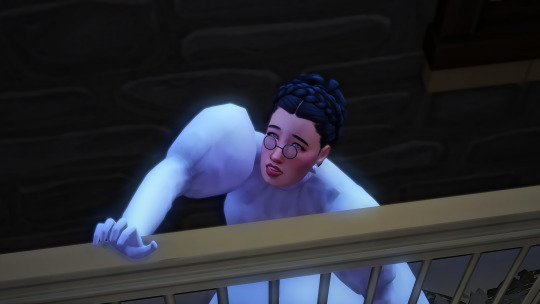


London, 1894
Emmeline
I have been — for not the first time, surely — quite stupid. Perhaps “delusional” would be a more apt descriptor, but it is an unavoidable truth no matter how I phrase it: I am with child yet again.
My attendants still appear to be most fortunately unobservant, though I do not desire to keep pushing my luck as I have been. Carrie (who has become quite the confidante for me in my time of need) told me that this has happened before — without a doubt, I will be sent home to Kenneth.
My mind has been overwhelmed with the worst of my memories from Isabelle’s birth and the ensuing period of melancholy that left me a mere shadow of myself; there is nothing in this world that terrifies me more than the idea of returning to serve out the sentence of “breeding cattle” bestowed upon me by both church and country. I cannot bear to be who I once was to him now, with all I have suffered as a result of his actions; I have borne hurt at his hands that I truly believed he could never make me feel. Carrie asked me if I’d rather risk the streets than return home, and I — perhaps too hastily — said yes.
Really, our attendants are not terribly threatening figures: after all, we are women of a certain station, and that station implies a degree of complacency and acquiescence, especially when provided with such luxuries and comforts. With Christmastime rapidly approaching, Carrie made note of the fact that the sanitarium staff dwindles down to the few without families to return home to, or some equally depressing situation that leaves them working on the merriest day of the year.
She helpfully reminded me of a recent but passionate flirtation she has had with a male attendant belonging to the latter group that may so conveniently take his attention away from me — it seems the stars have all aligned in perfect order, and I truly believe that if I do not make my leave then, I never will.
It does not escape me that I am asking for something I typically consider a rather naive notion: a Christmas miracle.
Yet, perhaps it is less terrifying than the alternative thought: for what may be the first time in my life, I am the steward of my own fate. Not Kenneth, not Father, and not Dr. Lyon.
I will rise or fall at my own ability or fault.
LAST POST | NEXT POST
#jailbreak!!!#cavendish legacy#cavendish legacy 1890#ts4 decades challenge#sims 4 decades challenge#ts4 historical#sims 4 historical#c: emmeline cavendish#c: carrie bates
61 notes
·
View notes
Text

isabelle adjani, lyon, 1975 via mubifrance
43 notes
·
View notes
Text

Typical Sunday Night ~
Thx Isabel Sig (again!)
Danny Lyon
"One of the most original and influential documentary photographers of the post-war generation, Danny Lyon forged a new style of documentary photography, described in literary circles as "New Journalism," an unconventional, personal form of documentary in which the photographer immersed himself in his subject’s world.
A graduate of the University of Chicago, Lyon began his career in 1962 as the staff photographer for the Student Non-Violent Coordinating Committee (SNCC), covering and participating in Civil Rights marches. His first important project was published as The Bikeriders (1967), and was based on four years spent on the road as a member of a motorcycle club known as the Chicago Outlaws, from 1963-1967. Lyon described the series as "an attempt to record and glorify the life of the American bikerider," whose golden years were receding as the sixties drew to a close. In 1971, Lyon published his best known work, Conversations with the Dead, which features photographs of six Texas prisons made over a period of fourteen-months, from 1967 to 1968. To make “a picture of imprisonment as distressing as I knew it to be in reality," Lyon juxtaposed his images with texts taken from prison records, interviews, inmates’ writings, (particularly the letters of Billy McCune, a convicted rapist), and even fiction..
Having established new models for both documentary photography and the photography book, Danny Lyon went on to become an influential documentary filmmaker, winning numerous honors and awards in both fields, including Guggenheim Fellowships in both film and photography, and the 2015 Lucie Award for Achievement in Documentary Photography.
Danny Lyon’s work is in the permanent collections of The Museum of Modern Art, The Metropolitan Museum of Art, the Whitney Museum of American Art, the Art Institute of Chicago, American Museum of Art, Smithsonian Institute, the J. Paul Getty Museum and many other public institutions. Lyon lives and works in New Mexico."
4 notes
·
View notes
Text
Thread about Joanna of Castile: Part 8.1: "A Tumultuous Dilemma: Juana's Struggle Between Love and Duties"
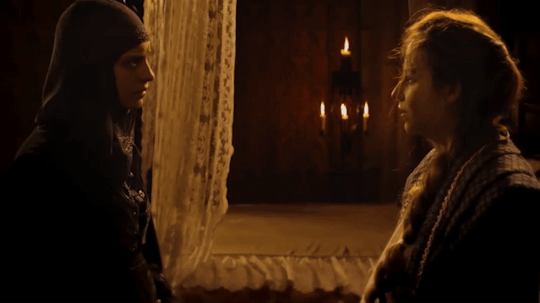
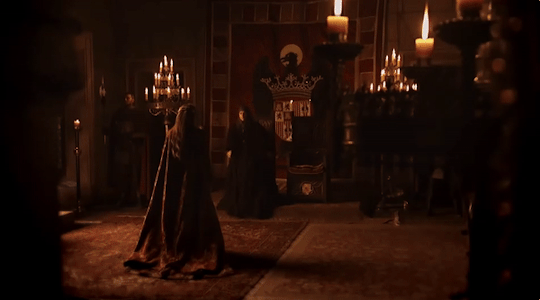

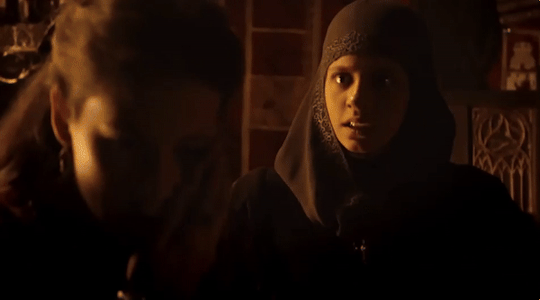
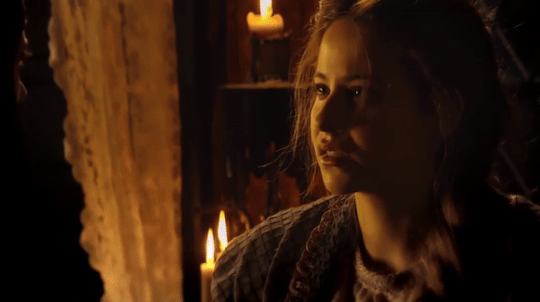
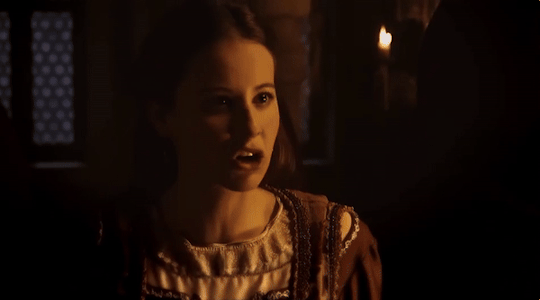
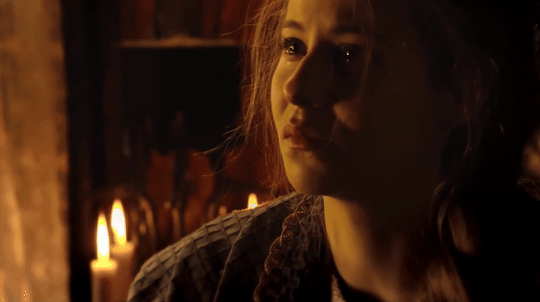

Torn, nonetheless, between mother and husband, old frustrations and resentments erupted. She feared that Isabel planned, in Padilla’s word, to descasar (‘unmarry’) her. The news that Philip, always susceptible to fever, had fallen seriously ill at Lyon would have put her in a state of deep concern. It can be no mere coincidence that, just as Louis’ doctors were despairing of Philip’s recovery, Isabel’s doctors were concluding that relations between mother and daughter had become so bad that they had to be separated.
Even if Juana did not fully realise the seriousness of Philip’s illness, her instinct would have been to rush to his side, and she may have reminded Isabel of the monarchs’ remark of 1500:
“Do not think that you are coming here never to return. Rather, you can come and go as you wish after being sworn-in.”
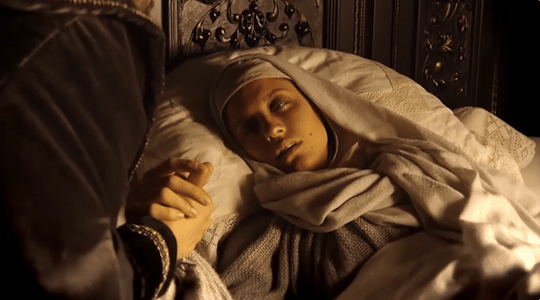

However, the seas were beginning to build, and Juana was unable to travel through France while hostilities continued. Above all, Isabel’s own health was deteriorating. She attempted to conceal Philips eventual arrival home from Juana “because, in truth, she did not want her daughter to return to Flanders, since she felt very unwell with the illness from which she died.”




Philip, upon his recovery, maintained the pressure for Juana's return by dispatching a series of messengers and letters. In August, Juana assured him that preparations for her departure were under way; that she and Isabel were heading for Burgos and that Ferdinand was well. In the event, Isabel stayed at Segovia while Juana, proceeding north, stayed in the stronghold of La Mota at Medina del Campo.
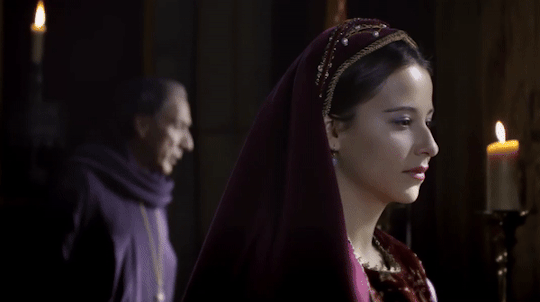
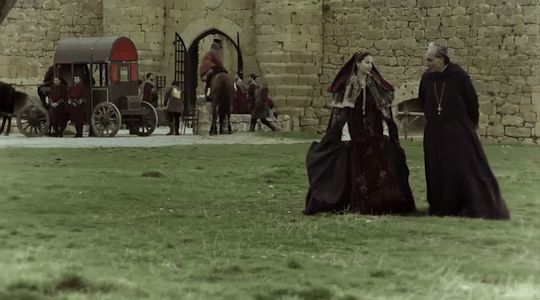

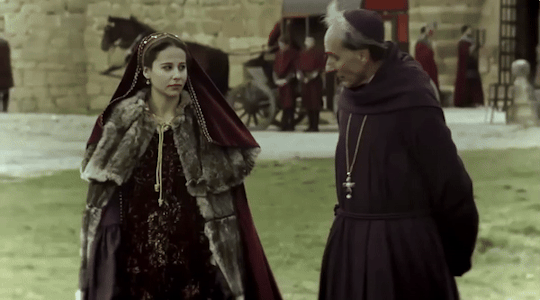

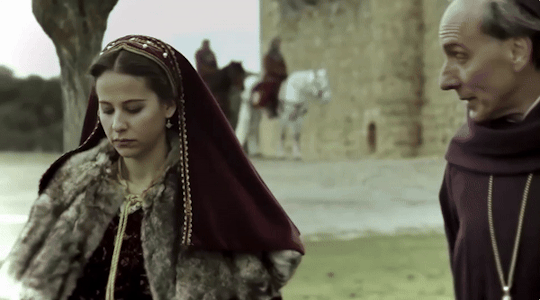
Her residence in the fortress remains something of a mystery. From its hill, the red brick castle, with its massive quadrilinear keep and bartizan towers, was Castile's arsenal as well as archive and occasional lodging place and prison, and it still has a prison. The most likely explanation for Juana's stay is that Isabel had decided that she could be better guarded at La Mota than at the royal palace, since trust was failing on both sides.
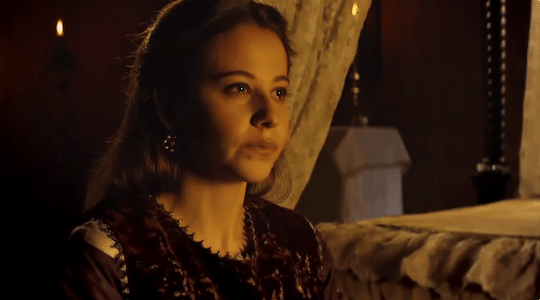

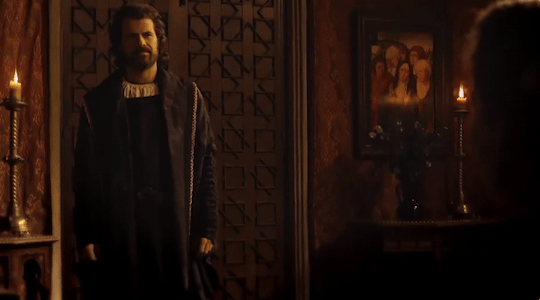
On 6 September, a ship’s captain told Fernando that he had received an order from Juana to await her at Bilbao. A dismayed Isabel wrote:
“I do not think, or expect, and so cannot believe you are leaving, for although there are many necessary reasons for your departure, greater problems may follow if you leave like this.”


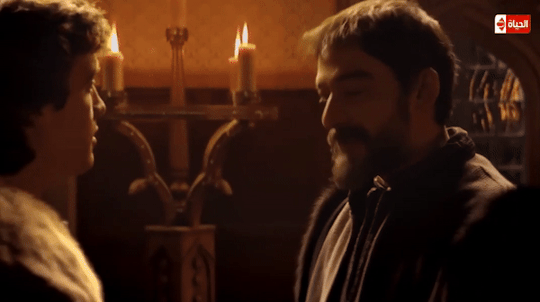

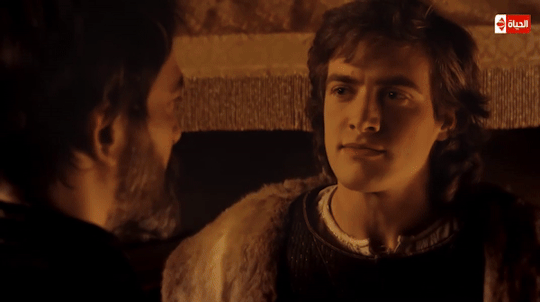

Juana complied. She was, however, beginning to feel pressure from Philip, who used four-year-old Charles to send an emotional appeal. Juana’s last reserves of self-control broke down.
Sources: Fleming, G. B. (2018). Juana I: Legitimacy and Conflict in Sixteenth-Century Castile (1st ed. 2018 edition). Palgrave Macmillan.
Fox, J. (2012). Sister Queens: The Noble, Tragic Lives of Katherine of Aragon and Juana, Queen of Castile. Ballantine Books.
Gómez, M. A., Juan-Navarro, S., & Zatlin, P. (2008). Juana of Castile: History and Myth of the Mad Queen. Associated University Presse.
#joanna of castile#juana i of castile#philip the handsome#juana la loca#isabel#spanish monarchy#johanna van castilie#european history#history#irene escolar#raul merida
10 notes
·
View notes
Text
MUSE CULLINGS all my society muses (sadie, nadia, harley) rorschach, artemis grace malia tate emma duval, audrey jensen, vince schneider elektra natchios, cassie lang, wanda maximoff isabelle carriere amelia benjamin imogen celwyn, padme amidala nora hamlin zoe murphy natalie berzatto ava daniels dot lyon ava silva jules thomas, ophelia mayer jennifer jareau jackie taylor inej ghafa, zoya nazalynskya, genya safin beth/b9 helen of sparta, thalia grace sweatpea golightly the vampire claudia chrissy cunningham frankie carneiro, matty tan
MOVED TO REQUEST ONLY dinah madani
#getting rid of 37 muses i never use so i dont nuke my whole blog is self care actually#surely i wont add more muses i wont use within the next few days#i mean i still have about a hundred more muses i never use but i like those ones they're my babies#*[ OOC ] . . . a treatise on the effects of caffeine
2 notes
·
View notes
Note
3, 4, & 10 for the book asks!
3. What were your top five books of the year?
I don't think this is going to surprise anyone who's been following me for more than a week, but I loved a chorus of dragons by Jenn Lyons. In the interest of those books not dominating this entire list I'll say The Memory of Souls was my favorite of the five (it wins over the discord of gods narrowly bc of all the banter and shenanigans and general lightheartedness that book five doesn't have the time for) and move on, lmao.
An Unkindness of Ghosts by Rivers Solomon. This book was like...sci-fi mashed into mystery mashed into suspense mashed into historical fiction mashed into horror and I loved EVERY second of it. Aster was such a great main character and everything about the ship itself was so horrifying from the idea of it slowly breaking down as they drifted ever further into empty space to the caste system that had taken over every inch of their society. 10/10 I need to buy it so I can read it again
Juniper & Thorn by Ava Reid. Oooh this book was so beautifully written and creepy and it was such a good fairy tale at the same time it was an amazing commentary of fairy tales and all the things we learn and internalize from reading them? And the mystery of the murdered men that's always floating around the edges + that slow growing horror as you start to suspect what's really going on... SO good. I read this book over like a full week and a half because every time I put it down life would get to me and I wouldn't pick it up again for a few days, and it's REALLY rare for me to stay invested when I end up reading a book like that but this one/ Every time I picked it up and started reading again I was immediately sucked back in.
This Dissonant Princess by Scarlett Barnhill. I have NO clue how I found out about this book (which is technically the second in a series, but I way prefered it over the first and tbh you could probably read it without the first and not miss much), it's self-published from what I can tell and has like. four ratings on goodreads, but I read it at a time where I didn't want anything overly complex and it was just such a delight and a really sweet story. The protagonist is a hot mess who is trying very hard to do better and I would die for her.
The Witchery by S. Isabelle. This was really fun urban fantasy that didn't go the way I expected at all, but in a super enjoyable way. There are six narrating characters in the cast, which is definitely a little confusing at first but by the end of the book I was attached to every one of them (especially Thalia and Iris, my beloveds). It's a story where witchcraft is a real thing and it's acknowledged throughout the world that some people are just going to be witches, rather than then staying hidden away and being unknown by mortals, and the world this creates is fascinating, especially when you mix in magical curses and enchanted wolves and necromancy.
Also, special shoutout to Record of a Spaceborn Few by Becky Chambers, which was also amazing, and Compound Fracture by Andrew Joseph White, which I talked about more below :)
4. Did you discover any authors that you love this year?
answered this a bit more in depth here, but my answeres were Jenn Lyons and Rivers Solomon!
10. What was your favorite new release of the year?
Okay... so I only read like... six 2024 releases this entire year... BUT! One of them was Compound Fracture by Andrew Joseph White and I am delighted to say that I've finally found a book by him that not only agrees with me, but that I absolutely LOVED. He still has a bit of a problem with inserting his own voice and thoughts into the characters even when it doesn't make sense for them to have those same thoughts, or when it's just like. unnecessary lmao. But anyways. Loved Miles, loved nearly every other character in the book, the overall plot was creepy and exciting and I was so obsessed with the like. JD/ Veronica dynamic from Heathers that Miles and Cooper had lmao.
5 notes
·
View notes
Text


Isabelle Sweetginger 🦊elle/she/ella
Modèle
Femme intemporelle•51 ans•Lyon 🇨🇵 𝐵𝑒𝑎𝑢𝑡𝑦 ℎ𝑎𝑠 𝑛𝑜 𝑎𝑔𝑒 #modelephoto Mode | Lingerie | Gourmet
33 notes
·
View notes
Text
fantasy tbr
It's weird that this is the longest section of my tbr because I rarely enjoy high fantasy. I think I just put a lot on here knowing I will DNF most of it. If any of these titles are hateful to you, let me know, because I wouldn't mind trimming it down a little.
A Fine and Private Place - Peter S. Beagle A Stranger in Olondria - Sofia Samatar The Necessary Beggar - Susan Palwick (ya with romance) Itzá - Rios de la Luz (fantasy, lgbt) the demon king - cinda williams chima (fantasy, ya, romance) Kingdom of Souls - Rena Barron K.D. Edward’s urban fantasy novel The Last Sun (lgbtq) Na’amen Gobert Tilahun’s novel The Root (lgbtq, urban fantasy) A Darker Shade of Magic (Shades of Magic, #1) - V.E. Schwab (fantasy) Cat Rambo - Beasts of Tabat (LGBT) Kelly Sandoval - A Lovely Light (lgbt) A Natural History of Dragons: A Memoir by Lady Trent - Marie Brennan Seraphina by Rachel Hartman (ya with romance, dragons) Lost Boy - Christina Henry (peter pan retelling, dark/horror) Night Theater - Vikram Paralkar (medical, magical realism) Fierce Femmes and Notorious Liars - Kai Cheng Thom (lgbt, magical realism, pseudo memoir) Bruce Mcallistor - The Girl Who Loved Animals and Other Stories (short stories, sci fi) The Marrow Thieves - Cherie Dimaline (ya fantasy) the winner's curse - Marie Rutkoski (fantasy) Burn - Patrick Ness (ya, dragons) Swordspoint (The World of Riverside #1) - Ellen Kushner (lgbt, fantasy) Black Wings Beating (Skybound #1) - Alex London (lgbt fantasy) The Door Into Fire (The Tale of the Five #1) - Diane Duane (fantasy, lgbt) Havenfall (Havenfall #1) - Sara Holland (ya fantasy) The Good Luck Girls - Charlotte Nicole Davis (fantasy, LGBT, Westworld inspired) The Kingdom - Jess Rothenberg (ya fantasy) Snow Like Ashes - Sara Raasch (ya fantasy, first in a trilogy) The Gilded Wolves (The Gilded Wolves #1) - Roshani Chokshi (YA, gaslamp fantasy, LGBT, some romance) Everfair - Nisi Shawl (fantasy, colonization) Carrie Vaughn - Kitty and the Midnight Hour (werewolf) Borderline (The Arcadia Project #1) - Mishell Baker (lgbt urban fantasy) Bridge of Birds - Barry Hughart (asian-inspired fantasy) queen of the conquered - kacen callender (fantasy) A Brightness Long Ago - Guy Gavriel Kay (fantasy, historical) Marian - Ella Lyons (ya fantasy) House of Salt and Sorrows - Erin A. Craig (fantasy) Robin Mckinley - The Blue Sword, Sunshine (fantasy) an ember in the ashes - sabaa tahir (fantasy, ya, romance) Fire Logic (Elemental Logic #1) - Laurie J. Marks (lgbt) Magic's Pawn (Valdemar: The Last Herald-Mage #1) - Mercedes Lackey (fantasy, lgbt) Labyrinth Lost (Brooklyn Brujas #1) - Zoraida Córdova (ya, LGBT, urban) Forest of Souls - Lori M. Lee (ya fantasy) Falling Kingdoms - Morgan Rhodes Spin the Dawn (The Blood of Stars, #1) - Elizabeth Lim (ya fantasy) Mask of Shadows - Linsey Miller (ya, LGBT, action) Resurrection Girls - Ava Morgyn (ya fantasy) Patricia Briggs - Moon called (werewolves, also a graphic novel) Beneath the Citadel - Destiny Soria (ya lgbt fantasy) Thornfruit - Felicia Davin (lgbtq, fantasy) Hurricane Child - Kacen Callender (lgbt, ya, magical realism, short) The Merciful Crow - Margaret Owen (fantasy) The Queen of the Tearling - Erica Johansen (fantasy) wicked fox - kat cho (fantasy) The Poppy War - R.F. Kuang The Paper Magician - Charlie N. Holmberg (ya fantasy) the raven cycle (the raven boys) - maggie stiefvater (fantasy) Lesley Nneka Arimah - what it means when a man falls from the sky (short stories) The Raven Tower - Ann Leckie (fantasy) Red Queen (Red Queen, #1) - Victoria Aveyard (ya fantasy) Woven in Moonlight - Isabel Ibañez (ya fantasy) Wicked Saints - Emily A. Duncan (fantasy) Unicorn Chronicles, The - Bruce Coville Sisters of Sword and Song - Rebecca Ross (ya fantasy) Sorcery of Thorns - Margaret Rogerson (fantasy)
The Sisters of the Winter Wood - Rena Rossner (fantasy) The Once and Future Witches - Alix E. Harrow (historical, fantasy) Floodtide (Alpennia #4) - Heather Rose Jones (lgbt fantasy historical) All of Us with Wings - Michelle Ruiz Keil (ya fantasy, 1980s) A River of Royal Blood - Amanda Joy Vermillion: The Adventures of Lou Merriwether, Psychopomp - Molly Tanzer The Hazel Wood - Melissa Albert (ya fantasy) name of the wind - patrick rothfuss (fantasy) The Navigator's Touch - Julia Ember (ya fantasy LGBT) the star-touched queen - roshani chokshi (fantasy) These Witches Don't Burn (ya urban romantasy, lgbt) Isabel Sterling Jitterbug Perfume by Tom Robbins (fantasy, humor, classics) In the Vanishers’ Palace - Aliette de Bodard (lgbt, fantasy) Three Dark Crowns (Three Dark Crowns #1) - Kendare Blake The Unlikely Escape of Uriah Heep - h.g. parry Jennifer Fallon - The Hythrun Chronicles, beginning with The Demon Child Trilogy (Medalon, Treason Keep, Harshini), and the Tide Lords quartet (fantasy) Snake Eyes (Gods & Monsters #3) - Hillary Monahan (lgbt fantasy) Ash - Malinda Lo (LGBT romance) Nocturna - (A Forgery of Magic #1) - Maya Motayne (&) Homesick: stories - Nino Cipri (SFF, lgbt, short stories) Ruined - Amy Tintera (ya romantasy) The Two Princesses of Bamarre - Gail Carson Levine (children's) The Wish - Gail Carson Levine (children's, &) Witchmark - C.L. Polk (fantasy, romance, lgbt) When Fox is a Thousand - Larissa Lai (lgbt fantasy) The Perfect Assassin (The Chronicles of Ghadid #1) - K.A. Doore (lgbt fantasy) The Midnight Dance - Nikki Katz (fantasy)
1 note
·
View note